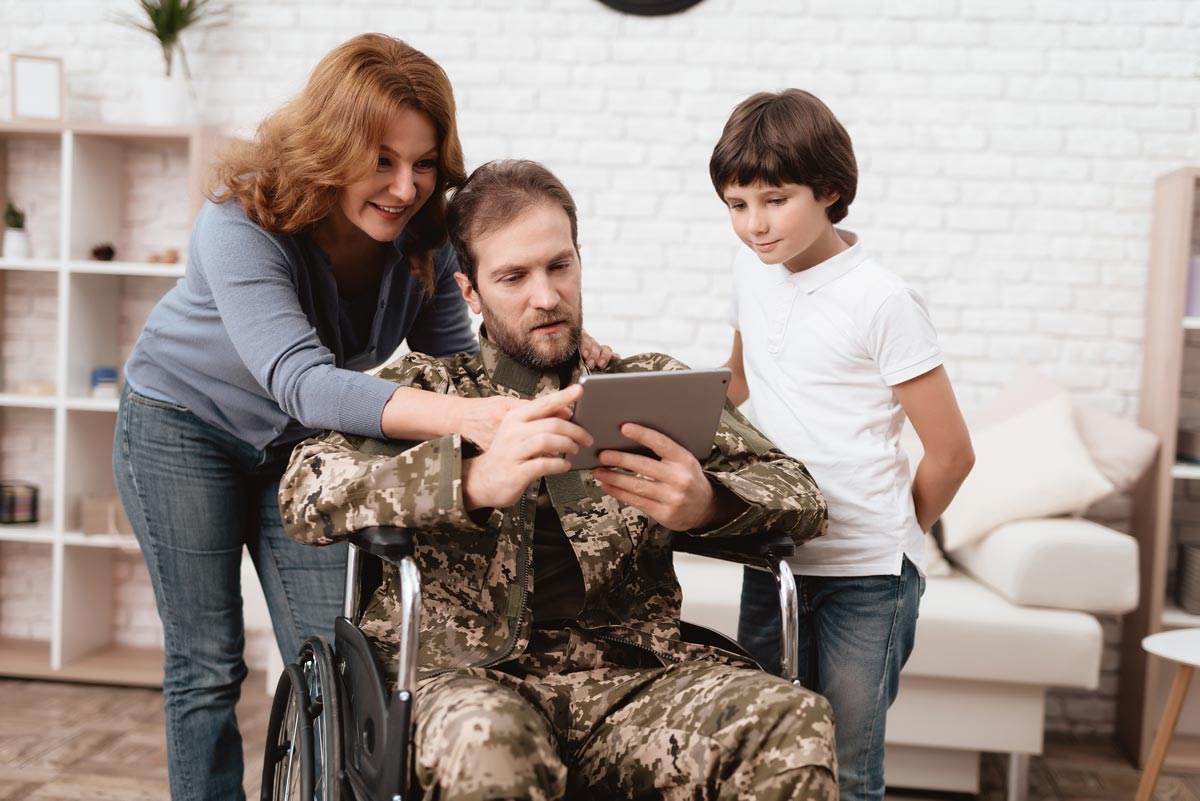Maneuvering transportation can be challenging for those of us on disability, but there are options that might ease the journey. From government programs to non-profit organizations, we might qualify for free or subsidized services that make it easier to get where we need to go. What are these options, and how can we access them? Let's explore the possibilities and uncover the support that could be available to us.
Key Takeaways
- Medicaid's Non-Emergency Medical Transportation (NEMT) can cover travel costs for medical appointments for eligible individuals with disabilities.
- Paratransit servicesTransportation services designed to accommodate individuals with disabilities who cannot use regular... provide door-to-door transport for those unable to use standard public transit due to disabilities.
- Many public transit authorities offer reduced fares for individuals with disabilities to lower transportation costs.
- Non-profit organizations often provide subsidized rides, vouchers, or volunteer drivers for essential travel needs.
- Eligibility for government financial assistance may require disability verification and meeting income limitations.
Understanding Transportation Challenges for Individuals With Disabilities
Traversing transportation systems can be particularly challenging for individuals with disabilities, as they often face barriers that many of us may overlook.
We need to understand that not every bus or train is accessible, and even when they are, inconsistencies in service can create significant obstacles. Some challenges include poorly maintained elevators, complex routes, and untrained staff who mightn't provide adequate support.
When we think about using public transport, it's easy to take these conveniences for granted. Yet, for individuals with disabilities, simple tasks like reaching a station or finding a safe path can turn into intimidating hurdles.
Government Programs Offering Free or Subsidized Transportation

Although maneuvering transportation systems can be intimidating for individuals with disabilities, there are government programs designed to ease this burden by offering free or subsidized transportation.
We can tap into resources like Medicaid's Non-Emergency Medical Transportation (NEMT), which helps cover travel costs to and from medical appointments.
Paratransit services, mandated by the Americans with Disabilities Act (ADA)A U.S. law that prohibits discrimination against individuals with disabilities in all areas of publi..., provide door-to-door service in many areas, ensuring we've access to crucial destinations within a specified radius.
Additionally, public transit authorities often offer reduced fares for individuals with disabilities, which helps make commuting more affordable.
Non-Profit Organizations Providing Transportation Assistance
When maneuvering transportation challenges, non-profit organizations can be invaluable allies in providing assistance to individuals with disabilities. They offer services tailored to our needs, ensuring we've access to essential destinations like medical appointments, grocery stores, and community centers.
Let's explore how these organizations make a difference:
- Door-to-door services: Many non-profits provide personalized transportation from our doorstep directly to where we need to go.
- Volunteer drivers: Some organizations partner with community members who volunteer their time and vehicles to assist us.
- Flexible scheduling: These groups often offer scheduling options that fit our unique needs, ensuring timely and reliable rides.
Paratransit Services and How They Work
While non-profit organizations offer valuable support, paratransit services also play a significant role in facilitating transportation for individuals with disabilities. These services provide door-to-door transport, guaranteeing we can travel safely and comfortably.
Typically operated by public transit agencies, paratransit is designed to complement regular public transportation systems. We often need to schedule rides in advance, providing flexibility for our unique travel needs.
To qualify, we generally must have a disability that prevents us from using standard public transport. Once eligibility is confirmed, we can book rides to medical appointments, work, or social events.
Understanding how paratransit works helps us gain independence and guarantees we remain active participants in our communities. It's a resource that promotes accessibilityThe design of products, devices, services, or environments to be usable by people with disabilities.... and inclusionThe practice of creating environments in which any individual or group can be and feel welcomed, res....
Accessing Community-Based Transportation Resources

Accessing community-based transportation resources is essential for enhancing our mobility and independence.
These resources can connect us with valuable services tailored to our needs. Understanding what's available in our community can make a significant difference in how we navigate our daily lives.
Here are some steps to get started:
- Research Local Nonprofits: Many organizations offer volunteer driver programs or shuttle services to assist those of us with disabilities.
- Community Centers: These centers often have information on transportation services or can connect us with local advocacyThe act of arguing in favor of, supporting, or defending the rights and interests of individuals or ... groups.
- Public Transit Agencies: They sometimes provide reduced fare programs or specialized services designed to accommodate our specific requirements.
Financial Assistance Options for Transportation Costs
Let's explore how we can ease transportation costs through various financial assistance options.
We'll consider eligibility for government programs, which often provide essential support, and highlight non-profit services dedicated to helping those with disabilities.
Additionally, we'll look at community-based transportation solutions that might offer cost-effective alternatives.
Government Program Eligibility
Steering through the maze of government program eligibility for financial assistance with transportation costs can be challenging, yet understanding the criteria is fundamental for those seeking help.
Let's explore how we can determine if we qualify for assistance. Typically, eligibility hinges on factors like income limitations and specific disability criteria.
Here's what we should consider:
- Income Requirements: Many programs have income thresholds that we must meet to qualify. Understanding where we stand financially is significant.
- Disability Verification: We may need to provide documentation proving our disability status, which can include medical records or other official documentation.
- Program Specific Criteria: Each program might've unique requirements, so it's essential to read through all the guidelines carefully.
Non-Profit Support Services
While maneuvering through financial assistance options for transportation costs, we shouldn't overlook the valuable support offered by non-profit organizations.
These organizations often provide vital help for those of us on disability needing transportation. They understand our unique challenges and work tirelessly to bridge gaps in services.
Programs vary, but many offer subsidized rides, vouchers, or even direct funding to guarantee we can get to essential appointments or activities.
It's important to reach out to local non-profits and inquire about their transportation assistanceServices that provide accessible transportation for individuals with disabilities, helping them acce... programs. They might require some paperwork, but the support they offer can be a game-changer.
Community-Based Transportation Solutions
Steering through the landscape of non-profit support services opens doors to another valuable resource: community-based transportation solutions.
These programs, often rooted in our local areas, provide tailored options to meet our unique transportation needs. As we explore these solutions, we should consider:
- Local Ride Programs: Many communities offer rides for medical appointments or errands through volunteer driver services.
- Paratransit Services: These are specialized transportation services for those who can't use regular public transport due to a disability.
- Community Shuttles: Some areas provide shuttle services that operate within specific neighborhoods, offering convenient access to nearby facilities.
Tips for Navigating Public Transportation With a Disability
Maneuvering public transportation with a disability can be challenging, but with a few practical strategies, we can make the journey smoother and more accessible.
First, let's familiarize ourselves with the transit system's accessibility features. Checking online for maps and guides that highlight accessible routes can be a great starting point. We should also plan our trips during off-peak hours to avoid crowded buses or trains, which can be overwhelming.
When we arrive at the station, let's look for elevators or ramps and verify we've a clear path. It's okay to ask for assistance from staff or fellow passengers if needed.
Finally, downloading transit apps can provide real-time updates on delays or changes, helping us adjust our plans efficiently.
How to Apply for Transportation Services and Support

How exactly can we access transportation services and support that cater to our needs? It's crucial to navigate the application process effectively.
First, research what's available locally, as options vary by area. Contact your local transit authority or social services to gather information. We should prepare vital documents proving our eligibility, such as medical records or proof of disability benefitsFinancial assistance provided to individuals who are unable to work due to a disability, such as Soc....
Let's make sure we fill out applications thoroughly and submit them on time.
Here are some steps to guide us through the process:
- Research Local Programs: Check with local transit authorities or online resources.
- Collect Necessary Documents: Gather medical records, proof of income, and identity documents.
- Submit Applications: Complete forms accurately and submit them before deadlines.
Conclusion
To summarize, we've explored various transportation options available for those of us on disability. From government programs like Medicaid's NEMT to community-based resources and non-profit organizations, there are multiple avenues to ease our travel challenges. Paratransit services and financial assistance can further support our mobility needs. It's crucial to research and apply for these services, ensuring we have the freedom and accessibility to attend medical appointments and manage our daily lives effectively. Let's take action and explore these opportunities today.






